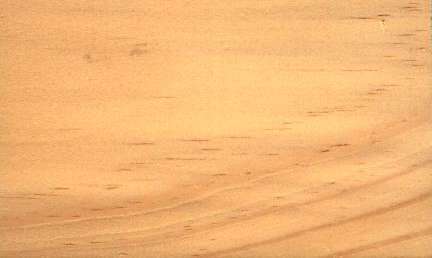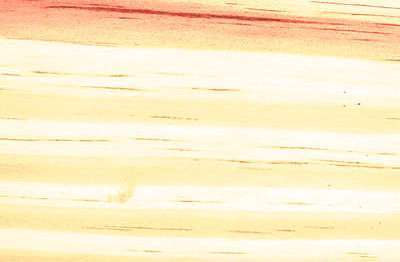 
Loblolly pine (Pinus taeda)
Family: Pinaceae
Common names: Bassett pine, Foxtail pine, Indian pine, Loblolly pine, Longleaf pine, North Carolina pine, Oldfield pine, Pine, Pinho-teda, Swamp pine, Taeda pine, Torch pine, Yellow pine
Distributed in: Brazil, New Zealand, South Africa, Uganda, United States, Uruguay, Zambia, Zimbabwe (Africa, Latin America, North America, Oceania and S.E. Asia)
Distribution overview: Loblolly pine is native to fifteen southeastern states in the United States. Its range extends from southern New Jersey south to central Florida, west to eastern Texas, and north to the far southeastern region of Oklahama. It grows on various soil types, from deep, poorly drained flood plains to well-drained slopes of rolling, hilly uplands, and it often forms pure stands, usually on abandoned farmlands. It grows from sea level to an elevation of 1500 to 2000 feet (457 to 610 m).
Common uses: Balsam, Balusters, Boxes and crates, Cabinetmaking, Chemical containers, Furniture, Joinery, Light construction, Paneling , Plywood, Poles, Pulp/Paper products, Railroad ties, Tool handles, Toys, Vats
Product sources: Scots pine is available in long lengths at low prices, but clear grades are rather difficult to obtain in commercial quantities. In addition to domestic supplies, very large quantities of Scots pine timber are imported from northern Europe into England. The imported wood is known by the trade names 'redwood' or 'red deal'.The following species in the database has similar properties to Scots pine: Para rubbertree (Hevea brasiliensis)
Environment profile: Environmental status not officially assessed
Tree size: Tree height is 30-40 m
Colors: the heart isWhite to cream, Yellowand the sapwoodWhite to yellow, Yellow.The grain isStraight, the textureMedium coarse to coarseand the lusterMedium
Natural durability: Susceptible to marine borer attack, Vulnerable to attack by powder-post beetles
Odor: No specific smell or taste
Kiln Schedules: UK=H US=T10D4S/T8D3S Fr=7
Kiln Drying Rate: Naturally dries at a moderate speed
Drying Defects: Splitting, Tends to distort and check durin drying
Ease of Drying: Slowly
Tree Identification: Bole/stem form is unknown
Comments: Higher in density More stable
Blunting Effect: Little
Boring: Responds well to boring
Carving: Good results
Cutting Resistance: Moderate to saw
Gluing: Moderate gluing properties
Mortising: good
Moulding: Generally easy moulding operations
Movement in Service: Generally easy moulding operations
Nailing: Good nailing characteristics, Nails hold poorly
Planing: Works fairly well but some material may pick up during planning
Resistance to Impregnation: Sapwood is permeable
Resistance to Splitting: Poor
Response to hand tools: Responds Readily
Routing recessing: Responds well to routing operations
Sanding: Frequent sandpaper changes is usually necessary because of clogging by resin
Steam bending: Moderate
Screwing: Good screwing properties, Screwing yields good results; Turning: Works easily in turning and most machining operations
Painting: Satisfactory; Polishing: Very Good to Excellent;
- Numerical data Metric
- Numerical data English
- Strength properties
- References
 |
 |
 |
 |
| Item |
Green |
Dry |
Metric |
| Specific Gravity |
0,44 |
0,47 |
|
| Density |
|
512 |
kg/m3 |
| Bending Strength |
475 |
793 |
kg/cm2 |
| Crushing Strength |
26 |
54 |
kg/cm2 |
| Hardness |
|
292 |
kg |
| Impact Strength |
73 |
106 |
cm |
| Shearing Strength |
|
95 |
kg/cm2 |
| Stiffness |
87 |
108 |
1000 kg/cm2 |
| Tangential Shrinkage |
6 |
|
% |
| Radial Shrinkage |
4 |
|
% |
| Weight |
496 |
384 |
kg/m3 |
| Maximum Load |
0,56 |
0,7 |
cm-kg/cm3 |
| Toughness |
|
218 |
cm-kg |
| Static Bending |
|
|
kg/cm2 |
|
 |  |  |  | | Item | Green | Dry | English | | Bending Strength | 6768 | 11292 | psi | | Crushing Strength | 382 | 774 | psi | | Density | | 32 | lbs/ft3 | | Hardness | | 645 | lbs | | Impact Strength | 29 | 42 | inches | | Maximum Crushing Strength | 3209 | 6069 | psi | | Shearing Strength | | 1352 | psi | | Stiffness | 1248 | 1537 | 1000 psi | | Toughness | | 190 | inch-lbs | | Work to Maximum Load | 8 | 10 | inch-lbs/in3 | | Specific Gravity | 0.44 | 0.47 | | | Weight | 31 | 24 | lbs/ft3 | | Radial Shrinkage | 4 | | % | | Tangential Shrinkage | 6 | | % | | Volumetric Shrinkage | 12 | | % | |
Bending strength (MOR) = low 0
Modulus of Elasticity (stiffness) = very low 1
Max. crushing strength = low 0
Density (dry weight) = 23-30 lbs/cu. ft.
Shearing strength (parallel to grain) = low
Max. crushing strength = medium
Shrinkage, Tangential = moderate
Shrinkage, Radial = very small
Shrinkage, Radial = small
Shrinkage, Radial = moderate
Shearing strength (parallel to grain) = very low
Density (dry weight) = 31-37 lbs/cu. ft.
Shrinkage, Tangential = small
Hardness (side grain) = very soft
Density (dry weight) = 38-45 lbs/cu. ft.
Shrinkage, Tangential = very small
Shrinkage, Tangential = fairly large
Modulus of Elasticity (stiffness) = low
Hardness (side grain) = soft
Density (dry weight) = 15-22 lbs/cu. ft.
Toughness-Hammer drop (Impact Strength) = high
Toughness (total work) = low
Soft wood, with surfaces denting easily
Shrinkage, Tangential = large
Shrinkage, Radial = large
Shrinkage, Radial = fairly large
Crushing strength = high
Bending strength (MOR) = high
Boone, R.S., C.J. Kozlik, P.J. Bois and E.M. Wengert. 1988. Dry Kiln Schedules for Commercial Woods: Temperate and Tropical. United States Department of Agriculture, Forest Service, Forest Products Laboratory, General Technical Report FPL-GTR-57, Madison, Wisconsin.Kaiser, Jo-Ann.Wood of the Month:Southern Pine - The Commercial Name for 10 Species.Wood & Wood Products, June, 1991.Little, E.L.1980.The Audubon Society Field Guide to North American Trees - Eastern Region.Published by Arthur A. Knopf, New York.Mirov, N.T. 1967. The Genus PINUS. The Ronald Press Company, New York. LCC Card No. 67-14783.NWFA. 1994. Wood Species Used in Flooring.Technical Publication No. A200.National Wood Flooring Association, Manchester, MO.Panshin, A.J. and C. deZeeuw. 1980. Textbook of Wood Technology, 4th Edition. McGraw-Hill Series in Forest Resources. McGraw-Hill Book Company, New York.USDA. 1987. Wood Handbook - Wood as an Engineering Material, Forest Service, Agriculture Handbook No. 72, Forest Products Laboratory, Madison, Wisconsin. 57,74,307,439,159,97,810,303,535,360USDA. 1988. Dry Kiln Operators Manual, Preliminary Copy. Forest Service, Forest Products Laboratory, Madison, Wisconsin.
|









